#carpetans
Explore tagged Tumblr posts
Text
Now that Hallowen is near, I have decided to share an interesting book I have been reading in these weeks, its title is Toledo: La Ciudad de los Muertos (Toledo: The City of the Dead), writen by Ventura Leblic García. The topic is to divulge about the stories and death rites of people of the several cultures and religions which have inhabitated the city throughout history. I'll be sharing scans of the pages of the book through posts here on Tumblr if anyone it's curious about the topic. Here's the first set:
PART 1
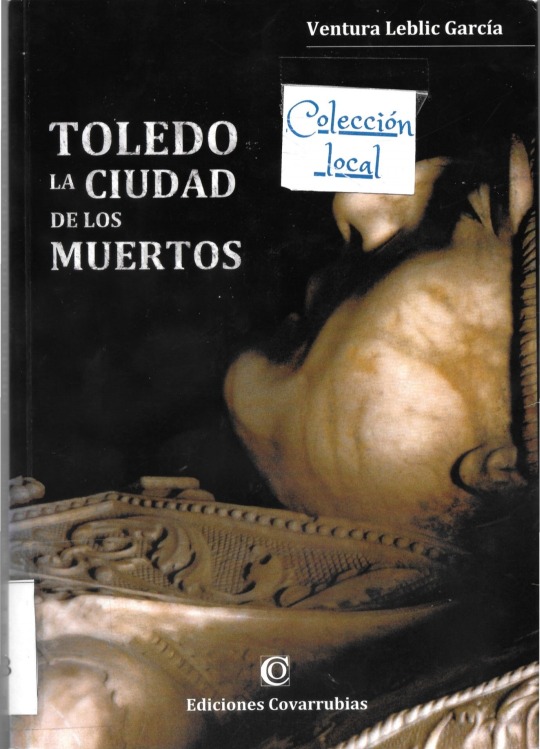
Cover
Toledo: The City of the Dead
Ventura Leblic García
Covarrubias Editions
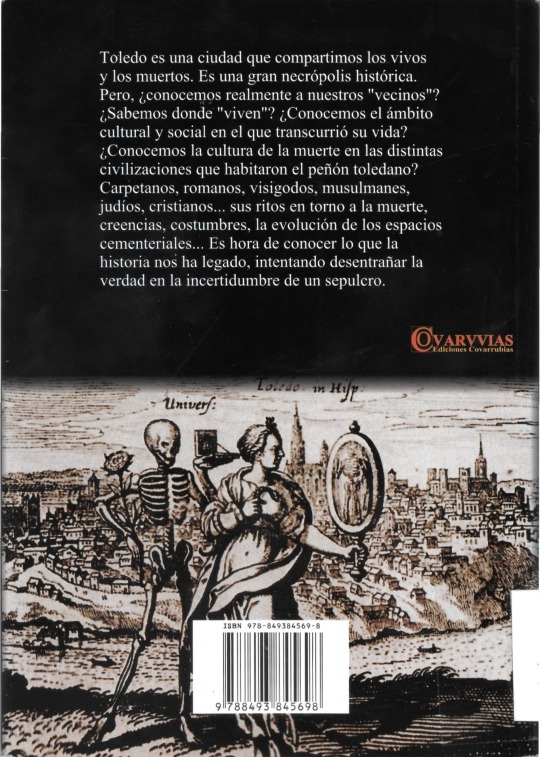
Backcover
Toledo is a city that the living and the dead share. It is a great historical necropolis. But do we really know our "neighbors"? Do we know where they "live"? Do we know the cultural and social environment in which their lives were spent? Do we know the culture of death in the different civilizations that inhabited the crag of Toledo? Carpetans, Romans, Visigoths, Muslims, Jews, Christians... their rites around death, beliefs, customs, the evolution of cemetery spaces... It is time to know what history has left us, trying to unravel the truth in the uncertainty of a tomb.
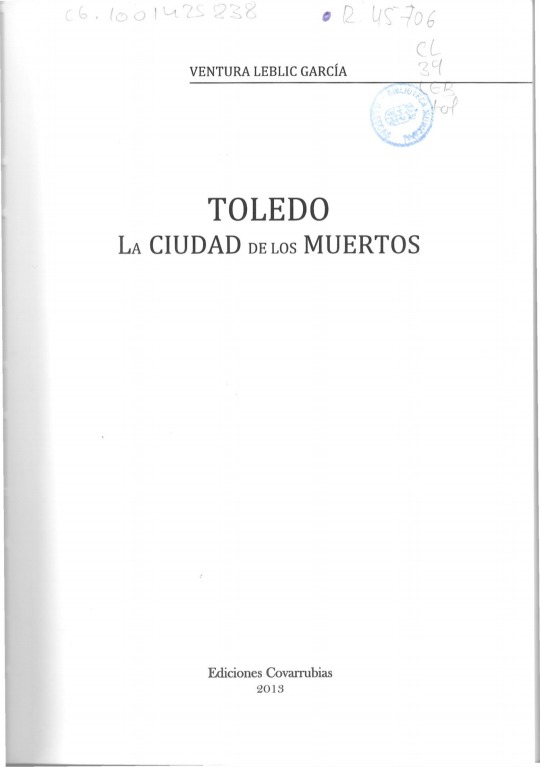
Toledo: The City of the Dead
Ventura Leblic García
Covarrubias Editions 2013

INDEX
Introduction. Page 9
Chapter I. Funerary practices in ancient times. Page 12
The indigenous people. Page 14
Chapter II. The cemetery spaces outside the walls of Toledo. Page 19
Roman cemeteries. Page 19
The early Christian cemetery. Page 24
Visigoth times. Page 31
Toledo's maqbara. The Muslim cemetery. Page 38
Toledo's Mozarabic cemeteries. Page 47
The Jewish cemetery. Page 50
Chapter III. The interior of churches as cementary spaces. Page 63
Chapter IV. Parish cemeteries. Page 70
Chapter V. The cemetery and the municipal cemetery. Page 103
Chapter VI. Royal burials in Toledo. Page 112
The New Kings Chapel. Page 136
New chapel. Page 139
Royal funerals in Toledo. Page 144
Chapter VII. Tombs of royal lineage in Toledo. Page 149
Chapter VIII. Other tombs in Toledo of people who made history. Page 170
The tomb of Doménikos Theotokópoulos "El Greco". Page 178
A frustrated pantheon of illustrious men. Page 182
Don Álvaro de Luna and Doña Juana de Pimentel. Page 188
An empty tomb for four hundred years. Page 191
The tomb of Cardinal Mendoza. Page 194
Francisco de Pisa. Page 196
The flying priest. Bartolomeu Lourenço de Gusmão. Page 197
Chapter IX. The Cistercian monastery of Monte Sión. A case of pantheon foundation. Page 201
The graves. Page 204
Chapter X. Bodies of saints and blesseds venerated in Toledo. Page 215
Chapter XI. Those who did not return. Page 232
Saint Ildefonso of Toledo. Page 232
Grave of Alfonso VI, king of Castile. Page 237
Alfonso X the Wise. Page 239
Francisco Jiménez de Cisneros. Page 240
Queen Joanna I of Castile. Page 242
Alfonso III de Fonseca, archbishop of Toledo. Page 243

Juan de Padilla. Page 244
Francisco de Rojas. Page 248
Cardinal Lorenzana. Page 249
Bibliography. Page 251
#books#toledo la ciudad de los muertos#toledo the city of the dead#ventura leblic garcía#history#pre-roman history#carpetan history#roman history#visigothic history#carpetania#hispania#jewish history#sefarad#sepharad#muslim history#al andalus#christian history#death rites#ancient history#medieval history#modern history#part 1#toledo#carpetan culture#roman culture#visigoth culture#christian culture#jewish culture#islamic culture#carpetans
2 notes
·
View notes
Text

LE PUY DU FOU À TOLEDE DÈS 2019 ! Depuis 40 ans, le Puy du Fou a inventé un modèle artistique unique qui fait revivre la grandeur des civilisations, en mettant en scène de grands spectacles historiques, dans des décors authentiques et au cœur d’une nature préservée. Avec 2,2 millions de visiteurs, le Puy du Fou connaît un immense succès en France. Dans le top 10 des parcs européens et 2ème parc de France, le Puy du Fou développe son concept unique dans le monde entier et créera un parc, à Tolède, dédié à l’Histoire de l’Espagne. Depuis plus d’un an, l’équipe du Puy du Fou travaille dans la discrétion, avec la région de Castille la Mancha et la ville de Tolède, à la création de ce parc qui va contribuer au rayonnement de Tolède et de sa région, en parfaite harmonie avec son incroyable richesse culturelle et touristique. Le Puy du Fou, un modèle artistique unique Depuis sa création en 1977, le Puy du Fou invente un nouveau modèle artistique : « Le Puy du Fou ne propose pas aux visiteurs ce qu’ils aiment mais ce qu’ils pourraient aimer ! » Fidèle à cette devise depuis 40 ans, il trace son chemin, forge son destin, loin des standards du secteur. Ainsi, chaque spectacle, chaque création est avant tout une création artistique innovante. La créativité du Puy du Fou ne suit pas les modes mais elle est en quête permanente de nouvelles émotions pour ses visiteurs. Des scenarii aux décors, des bandes sonores aux machineries et effets spéciaux, tout est inventé et mis en œuvre par les équipes du Puy du Fou pour garantir l’originalité des créations et l’unité artistique de l’ensemble de l’œuvre. Depuis 2012, l’excellence de la signature artistique du Puy du Fou a été récompensée 6 fois à travers le monde. Elu deux fois « Meilleur Parc du Monde » aux Etats-Unis, le Puy du Fou recevra le prix de la « Meilleure Création au Monde » à Los Angeles le 22 avril prochain pour son dernier grand spectacle « Le Dernier Panache ». Tolède, une évidence Après avoir étudié de nombreux lieux d’implantation, le Puy du Fou a porté son choix sur la région de Castille la Mancha et particulièrement sur Tolède, pour quatre raisons : - La légitimité historique : Tolède est l’un des hauts lieux de l’Histoire de l’Espagne. Classée au patrimoine mondial de l’humanité depuis 1986, Tolède offre une richesse culturelle immense. - La situation géographique : à seulement une heure de Madrid, grande capitale européenne, Tolède occupe une position centrale en Espagne et de grandes facilités d’accès. - Le potentiel touristique : l’Espagne connaît une très forte croissance de sa fréquentation touristique et Tolède fait partie des atouts espagnols. Plus de 2.5 millions de touristes du monde entier viennent chaque année découvrir les merveilles de la cité. - Un accueil chaleureux : dès les premiers contacts, le projet du Puy du Fou a été accueilli avec enthousiasme et professionnalisme par les équipes de la région Castille la Mancha et de la ville de Tolède. COMMUNIQUE DE PRESSE Le 18 avril 2017Un voyage au cœur de l’Histoire espagnole Inspiré du Puy du Fou en France, le projet artistique de Tolède sera totalement unique et intégralement dédié à l’Histoire de l’Espagne. Ce parc familial sera un fantastique voyage dans le temps à travers les siècles. Il sera implanté sur un terrain de 140 hectares situé sur le territoire du Municipio de Tolede, à 8 minutes du Casco Historico: la Finca Zurraquin. A leur arrivée, les visiteurs entreront dans leur propre Histoire, en même temps qu’ils découvriront un environnement naturel préservé et arboré (oliviers, encinas, amandiers …), ponctué de jardins en terrasse, de fontaines et de zones ombragées. Au cœur de cette nature sauvage et paysagée, des architectures authentiques, parfaitement intégrées, se fondent dans le paysage comme si elles existaient depuis des siècles. Chaque décor, chaque village, chaque spectacle met en scène une époque marquante de l’Histoire de l’Espagne, depuis les Celtibères jusqu’au XIXe siècle. Une ouverture dès 2019 Un spectacle nocturne en 2019 : A partir de 2019, chaque soir, une incroyable superproduction d’1h15 retracera de manière spectaculaire les plus riches heures de l’Histoire d’Espagne, des Carpetans jusqu’au XIXème siècle ; présentée par plus de 300 comédiens, cavaliers et techniciens, cette fresque rythmée et grandiose sera jouée devant 4000 spectateurs avec toutes les technologies les plus récentes sur les 10 hectares de scène. Plus de 120 000 spectateurs sont attendus dès la 1ère année. Un parc en 2020 : L’année suivante, en 2020, le Puy du Fou ouvrira la 1ère phase de son parc de jour, pour voyager dans le temps, de l’Antiquité au Siècle d’Or : - 30 hectares de nature - 2 grands spectacles de jour en plein air - 2 grands spectacles de jour en salle - 1 village historique et des restaurants Près de 1,3 millions de visiteurs sont attendus pour 2020 avec une capacité quotidienne pouvant atteindre jusqu’à 15 000 personnes. Des créations originales sont déjà prévues pour les années suivantes pour faire grandir le parc et offrir de grandes nouveautés très régulièrement ; ainsi, la création de trois grands spectacles est déjà programmée pour les années suivant l’ouverture. Quelques chiffres - 2000 ans d’Histoire espagnole mis en scène - 197 millions d’euros d’investissement - 1,3 million de visiteurs en 2020 - 30 hectares de visite - 1 superproduction nocturne de 1h15 et 4 grands spectacles de jour de 30 à 40 minutes - De 3 000 à 6 000 places pour chaque grand spectacle A propos du Puy du Fou : Créé en 1978, le Puy du Fou est un parc à thème complètement atypique. Il a été élu deux fois « meilleur parc du monde » en mars 2012 à Los Angeles (Thea Classic Award) et de nouveau en novembre 2014 à Orlando (Applause Award). Il est aujourd’hui le 2ème parc à thème de France avec plus de 2 220 000 visiteurs en 2016. Le Puy du Fou est un groupe composé principalement d’une association loi 1901 et d’une SAS (Société par Actions Simplifiées). L’association organise le spectacle de la Cinéscénie avec 3 800 bénévoles et détient la SAS qui gère le Grand Parc (60 spectacles de jour et de nuit, 4 villages d’époque, 27 restaurants et 5 hôtels à thèmes). Les deux structures assurent leur avenir en finançant Puy du Fou Académie (une école primaire « art & études ») et l’Académie Junior (un centre de formation artistique) qui forment chaque année plus de 600 jeunes aux arts et techniques du spectacle. Avec Puy du Fou International, le parc déploie son savoir-faire à travers le monde en conseillant des porteurs de projet dans la création de parcs et de spectacles sur le modèle du Puy du Fou. Depuis sa création, le Puy du Fou connaît une progression permanente grâce à son audace artistique et des investissements continus. www.puydufou.com Service de presse
2 notes
·
View notes
Text
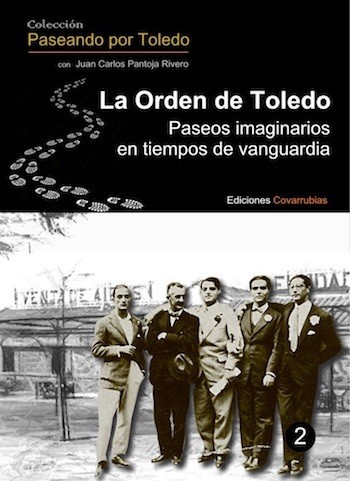
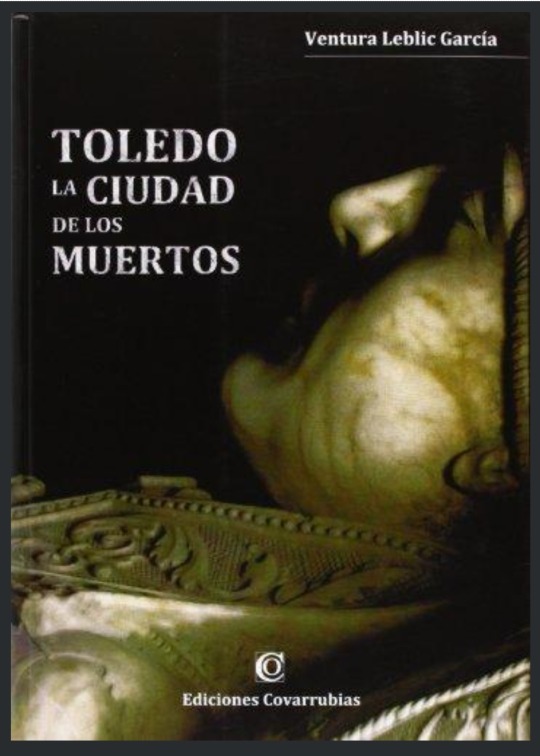
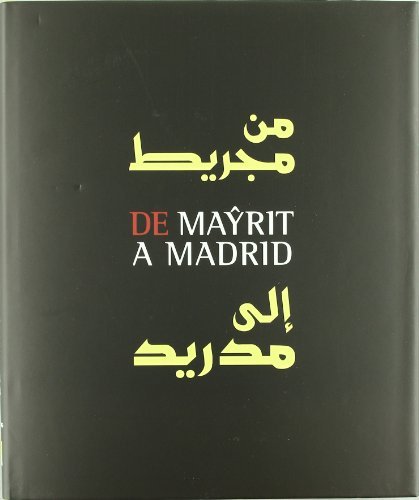

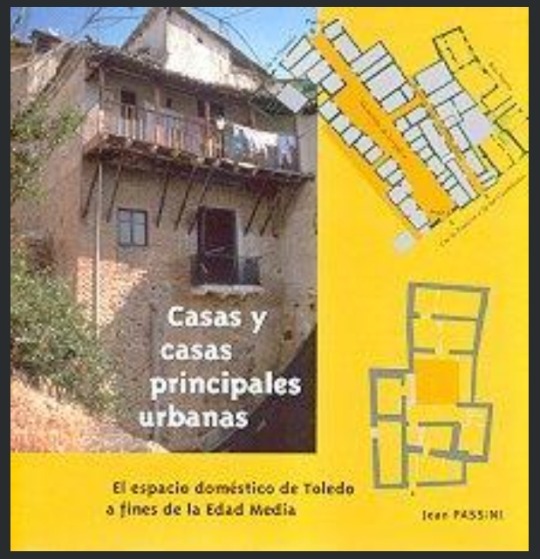
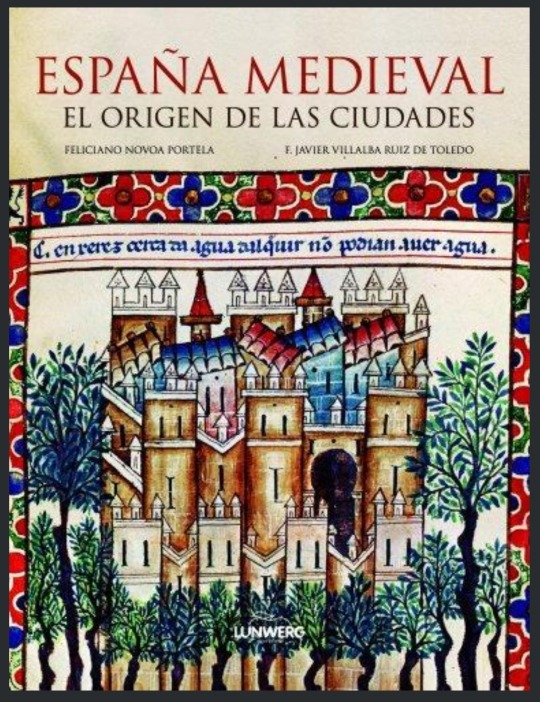

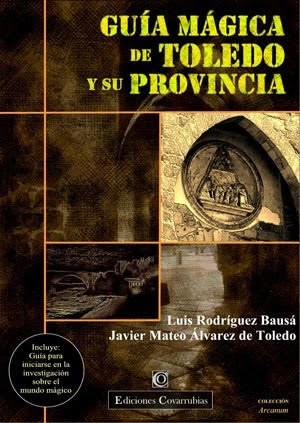


Propaganda
1. La Orden de Toledo: Paseos imaginarios en tiempos de vanguardia (The Order of Toledo: Imaginary walks in avant-garde times)
Author: Pantoja Rivero, Juan Carlos
Editorial: Covarrubias Ediciones
Edition: 2019
Synopsis: The Order of Toledo was, above all, an avant-garde fantasy of the brilliant film director Luis Buñuel, who knew how to infect his friends from the Generation of '27 to the Spanish intellectuality of the first third of the 20th century. Together, they dedicated themselves to living Toledo as if it were the great stage of a surrealist montage, in an artistic (or anti-artistic and irational) contrast with the monumentality and historical past of the old dead city.
(Well, in my blog I have been making posts about The Order of Toledo and the book is a valuable source)
2. Toledo: La ciudad de los muertos (Toledo: The city of the dead)
Author: Leblic García, Ventura Editorial: Covarrubias Ediciones Edition: 2013
Synopsis: Toledo. A large historical necropolis where Carpetans, Romans, Visigoths, Muslims, Jews and Christians rest...their rites around death, beliefs, customs, evolution of the cemetery spaces...
(I have posted the scans of the first pages of this books and I'm planning to keep on posting them but I wanted to know if you want scans from another book)
3. De Mayrit a Madrid: Madrid y los árabes del siglo IX al siglo XXI (From Mayrit to Madrid: Madrid and the Arabs from the 9th century to the 21st century) Editors: Madrid. Casa Árabe e Instituto Internacional de Estudios Árabes y del Mundo Musulmán ; Barcelona ; Madrid: Lunwerg Edition: 2011
Synopsis: This work deals with the Arab-Islamic past (Andalusian, Mudejar and Moorish) of Madrid and its forgotten heritage since it is the only European capital whose origins and name are linked to Arabic.
Revisiting that past and making it known is the objective of this work, which wants to rescue knowledge of a relationship between Madrid and the Arabs that does not end in the Middle Ages, since the town and court maintained various links with what was over time. Arab through diplomatic delegations, Arab figures welcomed by the city, valuable collections of manuscripts and numismatics, a romantic architectural taste that seeded the city with unique neo-Islamic buildings or Hispano-Arab scientific and cultural institutions. And, finally, the cosmopolitan and intercultural reconversion of the city has made it the recipient of a new Arab and Muslim immigration that once again gives human visibility to this relationship between Madrid and the Arab.
4. La Judería de Toledo (The Jewish Quarter of Toledo)
Author: Passini, Jean
Editorial: Ediciones del Sofer
Edition: 2014
Synopsis: The work reveals the vestiges of the areas of medieval Toledo Jewry and its history. It collects a topographical reading of its evolution and offers the main elements through maps, plans and high-quality color photographs.
5. Casas y casas principales urbanas : el espacio doméstico de Toledo a fines de la Edad Media (Houses and main urban houses: the domestic space of Toledo at the end of the Middle Ages)
Author: Passini, Jean. Editor: Toledo. Universidad de Castilla-La Mancha
Edition: 2004
Synopsis: This work is an extension of previous research on different districts, and seeks, for the city as a whole, to “understand the genesis of medieval urban space, to follow its transformations and successive reappropriations” , mainly with the aim of understanding, for one of the ancient provincial capitals of al-Andalus, the modalities of the transition from the Muslim city of the end of the eleventh century (time of its occupation by the Christians) to the Castilian city of the end of the Middle Ages. The main documentary basis of the work is a very important and very detailed inventory of the real estate of the Cathedral Chapter, an inventory carried out in 1491-1492, which covers a considerable heritage of 557 various buildings located in 64 sites or districts. The identification and location of houses, shops, mesones or fondouks and other urban buildings, often difficult on the current plot, has however resulted in the careful study of more than half of these old buildings. The systematic comparison of the text from the end of the Middle Ages with the remains still visible above ground or underground (and this very meticulous and patient work in the cellars of current Toledan houses is one of the great originalities of the research of Jean Passini) gave the results which are presented in this latest publication.
6. España medieval : el origen de las ciudades (Medieval Spain: the origin of the cities)
Authors: Novoa Portela, Feliciano; Villalba Ruiz de Toledo, F. Javier Editors: Barcelona ; Madrid : Lunwerg, D.L.
Edition: 2012
Synopsis: A fascinating essay that will teach us to look at and understand our cities better. In the pages of this essay we will analyze the Roman origins, the Islamic, Christian and European influences to discover the cultural melting pot that marks the Spanish urban legacy, without forgetting some disappeared cities that tell us their history through archaeological remains.
7. Valle-Inclán y el insólito caso del hombre con rayos x en los ojos (Valle-Inclán and the unusual case of the man with x-rays in his eyes)
Editors: Madrid. La Felguera
Edition: 2014 Synopsis: In 1923, a piece of news sparked great controversy among intellectuals, journalists and scientists. Joaquín Argamasilla, a young descendant of a family of aristocrats, claimed to have x-ray vision that allowed him to see through opaque bodies. The controversy, which divided half the country between defenders and detractors of the strange case, reached the highest circles. In April, at the initiative of Queen María Cristina, a commission was established to study the case, chaired by Ramón y Cajal. Valle-Inclán came to Argamasilla's defense and the great Harry Houdini challenged him to a public demonstration in New York.
(Joaquín Argamasilla, Harry Houdini, Valle-Inclán, Ramón y Cajal... yep, we're thinking the same, episode 2xO6, Tiempo de Magia, from El Ministerio del Tiempo, if anyone wants to learn more about this topic this book is good)
8. Guía mágica de Toledo y su provincia (Magical guide to Toledo and its province) Authors: Rodríguez Bausá, Luis; Álvarez de Toledo, Javier Mateo Editorial: Ediciones Covarrubias
Edition: 2010
Synopsis: Saramago wrote that traveling should be a matter of another matter, staying more and walking less; and a little later he added that it is not good to stay for only a quarter of an hour next to a construction that is seven hundred years old. The authors agree with such appropriate phrases, and that is why they have written this route, this uneven guide, this compilation of events, in short, so that the traveler stops in a multitude of towns that only sounded like transit and never like stop and inn. Because the truth is that the city of Toledo and its province discreetly hide a large number of enclaves that deserve to be savored by the five senses, and in which one must rest until the memory is macerated. This is what this work talks about: caves, sacred mountains, magical wells, rainy images, enchanted fountains or thunderous miracles... but, above all, towns, cities and regions; yes, with order and a taste of dissidence and heterodoxy.
Also included is what the authors have called "Beginner's Guide", a brief but rigorous approach to the magical phenomenon, something like an index so that whoever wants it, has the basic premises to get started in the world of research on these issues.
9. AL-ANDALUS. Ocho siglos de civilización musulmana que marcaron la historia y la cultura de España (AL ANDALUS. Eight centuries of Muslim civilization that marked the history and culture of Spain) Author: Masiá, Concha Editorial: ALBA Edition: 2006
Synopsis: "In the year 711, the Muslims arrived in the Iberian Peninsula. They called the vast territory where they settled for 800 years, from Tarifa to the Pyrenees, from the Levant to Portugal, al-Andalus. With their lights and shadows, these eight centuries of Muslim civilization, configuring many aspects of our personality as a people and as a culture, to which we Spaniards of the 21st century are still indebted"
This book and the following two books are like a triology about Al Andalus. This first one collects information about the different periods, states, events and some of its rulers throughout the history of Al Andalus.
10. AL-ANDALUS. Personajes históricos (AL ANDALUS. Historical figures) Author: Masiá, Concha Editorial: Albor Libros, Madrid Edition: 2011
Synopsis: "A general vision of al-Andalus, from the 8th century to the 17th century, through its most prominent characters and also through less known, although no less important, people. Both of them reveal the splendor and glory of the imperishable Andalusian legacy"
This book gathers information about divers people from different states and periods throughout the history of Al Andalus: emirs, caliphs, politicians, religious leaders, warriors, scholars, artists, philosophers, poets...
11. AL-ANDALUS. 800 años de lucha (AL ANDALUS. 800 years of struggle)
Author: Masiá, Concha Editorial: Albor Libros, Madrid Edition: 2011
Synopsis: "In the year 711, the Muslims arrived in the Iberian Peninsula. They called the vast territory where they settled for 800 years, from Tarifa to the Pyrenees, from the Levant to Portugal, al-Andalus. With their lights and shadows, these eight centuries of Muslim civilization, configuring many aspects of our personality as a people and as a culture, to which we Spaniards of the 21st century are still indebted"
This book offers a view on the warfare, battles and military campaigns from different periods and states throughout the history of Al Andalus.
12. 20 grandes obras de 20 autores andalusíes (20 great works by 20 Andalusian authors)
Author: Lirola Delgado, Jorge
Editorial: FUNDACIÓN IBN TUFAYL DE ESTUDIOS ARABES
Edition: 2014
Synopsis: Selection of 20 Andalusian authors and 20 works from the different periods of al-Andalus. The book offers a biography of each author and a detailed description of the work.
#bookblr#books#history#polls#history books#spanish history#al andalus#la orden de toledo#paseos imaginarios en tiempos de vanguardia#toledo: la ciudad de los muertos#de mayrit a madrid#madrid y los árabes del siglo IX al siglo XXI#la judería de toledo#casas y casas principales urbanas#el espacio doméstico de Toledo a fines de la Edad Media#españa medieval : el origen de las ciudades#valle-inclán y el insólito caso del hombre con rayos x en los ojos#guía mágica de toledo y su provincia#AL-ANDALUS. Ocho siglos de civilización musulmana que marcaron la historia y la cultura de España#AL-ANDALUS. Personajes históricos#AL-ANDALUS. 800 años de lucha#20 grandes obras de 20 autores andalusíes#sefarad#madrid#toledo#the order of toledo#The Order of Toledo: Imaginary walks in avant-garde times#Toledo: The city of the dead#From Mayrit to Madrid#Madrid and the Arabs from the 9th century to the 21st century
10 notes
·
View notes